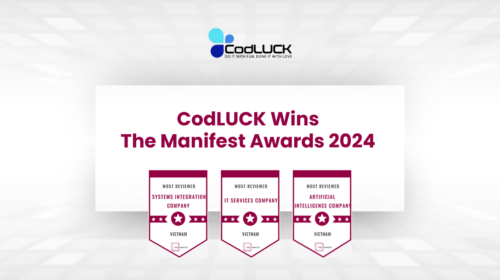Crafting an RFP traditionally entails significant time and complexity; especially in the industry where traditional practices frequently conflict with contemporary requirements. The conventional manual methods of conducting operations deplete resources and hinder the ability to adapt to the rapidly evolving sector. Hence, leveraging generative AI can notably streamline and simplify this intricate task, promising enhanced efficiency and efficacy.
This blog will introduce you to some specific ways that generative AI can be used to improve the RFP process.
Request for Proposal (RFP) Explanation

A request for proposal (RFP) is a document typically used by organizations, businesses, or government agencies to solicit bids from potential vendors or suppliers for a particular project or service. An RFP outlines the project requirements, objectives, scope of work, and evaluation criteria. It invites interested parties to submit proposals detailing how they would meet the specified requirements, including pricing, timelines, and deliverables. The purpose of an RFP is to gather competitive proposals from multiple vendors, allowing the soliciting organization to evaluate and select the best-suited vendor for the project. RFPs are commonly used in various industries, including construction, IT, consulting, and professional services, among others.
The timeline for the RFP process can differ, depending on factors like project complexity, client organization needs, and the resources available to the bidder. The RFP process typically lasts from two to six weeks.
Essential Elements of an RFP:
- Project Summary: Concise project description and goals.
- Work Scope: Comprehensive outline of tasks, milestones, and outcomes.
- Schedule: Project stages and key dates.
- Financials: Budgetary limits or project cost range.
- Vendor Requirements: Qualifications vendors need to fulfill for consideration.
- Proposal Instructions: Guidelines on proposal submission methods and deadlines.
- Assessment Criteria: Standards utilized to assess proposals.
The Mounting Challenges When Using Conventional Approaches
Several challenges arise when using conventional approaches for Request for Proposal (RFP) processes:
1. Time-Consuming Process
Traditional RFP processes often involve manual tasks, such as drafting documents, sending them out to potential vendors, and reviewing responses. These tasks can be time-consuming and labor-intensive.
2. Limited Visibility
With manual processes, it can be challenging to track the progress of RFPs and monitor the status of responses. This lack of visibility can lead to delays and inefficiencies in the procurement process.
3. Inconsistencies and Errors
Manual processes are prone to human errors and inconsistencies in document preparation and evaluation. This can result in inaccuracies in RFP documents and evaluations, leading to suboptimal outcomes.
4. Difficulty in Collaboration
Collaboration among stakeholders involved in the RFP process, such as procurement teams, legal departments, and subject matter experts, can be challenging with manual processes. Coordinating inputs and feedback from multiple parties can lead to communication breakdowns and delays.
5. Limited Supplier Engagement
Traditional RFP processes may limit opportunities for meaningful engagement with potential suppliers. Vendors may struggle to understand the requirements or have difficulty providing comprehensive responses within the given timeframe.
6. Risk of Compliance Issues
Manual processes may increase the risk of non-compliance with procurement regulations and policies. Without proper documentation and tracking mechanisms, organizations may face challenges in demonstrating transparency and fairness in the procurement process.
7. Difficulty in Data Analysis
Manual RFP processes make it challenging to analyze and compare vendor responses systematically. This can hinder organizations’ ability to make informed decisions based on objective criteria and performance metrics.
How Does Generative AI Enhance The RFP Process?
Organizations can leverage the exponential speed, cost savings, and insights that intelligent automation unlocks by integrating the technology.
Key Features of AI-driven RFP Solutions Include
- Automated Content Generation: AI-driven RFP solutions automate the generation of RFP content, including responses to specific requirements and questions. This feature saves time and effort by eliminating the need for manual content creation.
- Natural Language Processing (NLP): NLP capabilities allow AI-driven RFP solutions to understand and interpret natural language, enabling them to extract relevant information from RFP documents and generate contextually appropriate responses.
- Customization and Personalization: AI-driven RFP solutions can customize and personalize RFP responses based on the unique characteristics and preferences of the soliciting organization. This feature ensures that responses are tailored to meet the specific needs and expectations of the client.
- Data Analytics and Insights: AI-driven RFP solutions leverage data analytics and machine learning algorithms to analyze past RFPs, historical data, and performance metrics. This enables organizations to gain valuable insights into their RFP processes and improve decision-making.
- Scalability: AI-driven RFP solutions are highly scalable, allowing organizations to handle a large volume of RFPs and responses efficiently. Whether dealing with a single RFP or multiple concurrent solicitations, AI-driven solutions can adapt to meet the demands of the procurement process.
- Integration with Existing Systems: AI-driven RFP solutions can integrate seamlessly with existing procurement systems and workflows, allowing for smooth collaboration and data exchange between different tools and platforms.
- Continuous Improvement: AI-driven RFP solutions continuously learn and improve over time based on feedback and performance data. This enables organizations to refine and optimize their RFP processes for better outcomes and efficiency.
Examples of RFP with Generative AI
RFP Templates
Utilizing Generative AI allows for the creation of tailored RFP templates that meet the specific demands of a public sector entity, leading to notable time and resource savings. Instead of beginning from square one for each RFP creation, the organization can furnish the generative AI model with fundamental details regarding its IT needs, including product/service specifications, budget constraints, and project timelines. Subsequently, the AI model will produce a preliminary RFP template for review and customization by the organization.
RFP Content
Generative AI is valuable for producing tailored content for RFPs, including sections like the executive summary, scope of work, and evaluation criteria. This feature is particularly beneficial for public sector entities with constrained resources or limited expertise in RFP writing. To create RFP content, the organization can offer specific guidelines to the generative AI model, outlining essential points to cover and the desired tone. Subsequently, the AI model will generate a draft of the content for the organization to review and refine.
RFP Review and Refine
After generating a preliminary RFP draft, generative AI can aid in reviewing and enhancing it. This process assists in detecting errors or omissions and ensures that the RFP is coherent, succinct, and comprehensible. To conduct this review and refinement, the public sector organization can supply the generative AI model with the draft RFP and request feedback on areas needing enhancement. Subsequently, the AI model will produce a report detailing its observations and suggestions for improvement.
Conclusion
Generative AI represents a transformative leap in RFP automation, revolutionizing how organizations solicit bids and evaluate proposals. By streamlining content generation, enhancing personalization, and accelerating response times, Generative AI is reshaping the procurement landscape and enabling organizations to achieve greater efficiency and effectiveness in their RFP processes. As AI capabilities continue to advance, integrating Generative AI into RFP automation becomes not only a strategic advantage but a necessity for organizations seeking to stay ahead in today’s competitive business environment.
Source: Xenonstack



